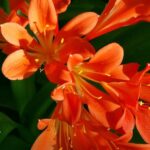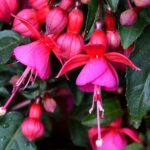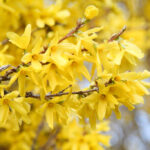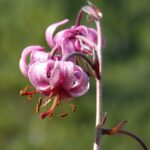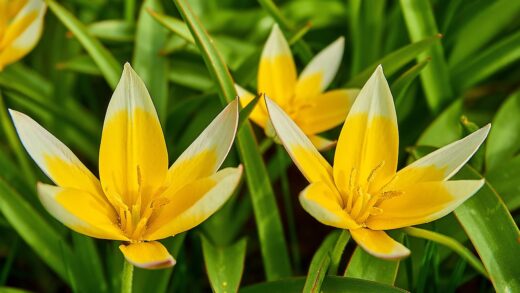Planting and propagation of angel’s trumpet
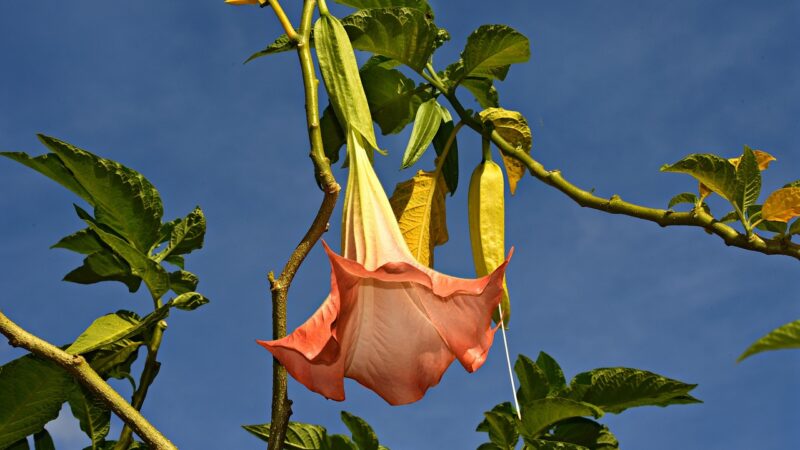
The successful cultivation of the majestic angel’s trumpet begins with two fundamental processes: proper planting and effective propagation. Establishing a new Brugmansia, whether it is a nursery-purchased specimen or a freshly rooted cutting, requires careful attention to location, soil preparation, and initial care to ensure it develops a strong root system and acclimatizes well to its new environment. The planting process is not merely about digging a hole; it is about creating an ideal foundation that will support the plant’s vigorous growth and its substantial demands for water and nutrients for years to come. Similarly, mastering propagation is an immensely rewarding skill, allowing a gardener to multiply their stock, share plants with others, and preserve the genetic lineage of a particularly cherished cultivar. From the simple rooting of a stem cutting to more advanced methods, propagation unlocks the full potential of working with these incredible plants.
Planting a Brugmansia correctly is an investment in its future health and performance. The primary consideration is selecting a site that meets its specific needs for light and protection. These plants flourish with ample morning sun and benefit from shelter from the intense heat of the afternoon, especially in hotter climates. Equally important is protection from strong winds, which can easily damage the large, soft leaves and brittle branches. Once the location is chosen, the focus shifts to the soil itself. Brugmansia are heavy feeders that demand rich, fertile, and well-draining soil to fuel their rapid growth. Amending the planting area with generous amounts of organic matter, such as compost or aged manure, is essential for providing the necessary nutrients and creating a soil structure that retains moisture without becoming waterlogged.
When it comes to propagation, the most common and accessible method for Brugmansia is through stem cuttings. This technique takes advantage of the plant’s natural ability to form new roots from sections of its woody stems. The process is relatively straightforward and has a high success rate, making it an excellent way for gardeners of all skill levels to create new plants. Selecting healthy, semi-hardwood cuttings from a mature plant, preparing them correctly, and placing them in a suitable rooting medium are the key steps. With the right conditions of warmth and humidity, these cuttings will develop a robust root system in a matter of weeks, quickly growing into new, viable plants that are genetic clones of the parent.
Beyond the basics, understanding the nuances of these processes can elevate one’s success. For planting, this includes considering the size of the container for potted specimens, as this will directly influence the plant’s ultimate size and its watering needs. For propagation, it involves learning to identify the best type of cutting—whether it is a terminal cutting from the tip of a branch or a sectional cutting from further down the stem. Exploring different rooting mediums, from water to perlite to a custom soil mix, can also reveal which method works best within one’s specific growing conditions. This deeper engagement with the plant’s life cycle is what transforms simple gardening into a true horticultural craft.
Selecting the ideal planting site
The long-term health and vitality of a Brugmansia are profoundly influenced by its initial placement in the garden. The selection of an ideal site involves a careful assessment of several environmental factors, with light exposure being the most critical. Angel’s trumpets crave bright light to fuel their growth and flower production, but they are also sensitive to excessive heat. The perfect location is one that provides at least six hours of direct morning sunlight, followed by dappled or partial shade during the hottest part of the afternoon. This combination prevents the large leaves from scorching and wilting under intense solar radiation, reducing stress on the plant and conserving moisture. An east-facing wall or a location under the high canopy of deciduous trees often provides this ideal light balance.
More articles on this topic
Beyond sunlight, protection from the elements is a key consideration. The large, pendulous flowers and broad, soft leaves of the Brugmansia act like sails in the wind, making the plant highly susceptible to physical damage. Strong gusts can shred the foliage, snap branches, and even topple a container-grown specimen. Therefore, choosing a sheltered spot, such as a courtyard, a protected corner of a patio, or an area shielded by a fence, hedge, or other buildings, is crucial. This protection not only preserves the aesthetic quality of the plant but also prevents the energy expenditure required to repair damage, allowing it to focus on growth and flowering.
The soil at the chosen site must also be carefully evaluated. Brugmansia demand a rich, loamy, and well-draining substrate to thrive. Before planting, it is essential to assess the existing soil quality. Heavy clay soils, which drain poorly, must be heavily amended with organic matter like compost, peat moss, and coarse sand to improve aeration and drainage. Conversely, overly sandy soils that drain too quickly will need the addition of compost and other organic materials to enhance their water-holding capacity and nutrient content. The goal is to create a root environment that stays consistently moist but never saturated.
Finally, consider the mature size of the plant when selecting a site. A healthy Brugmansia can grow into a large shrub or a small tree, reaching several meters in both height and spread within a single season. It is vital to provide adequate space for the plant to reach its full potential without crowding neighboring plants or obstructing pathways. Planting too close to a building can also restrict airflow, which may increase the risk of fungal diseases. Allocating sufficient space from the outset prevents the need for drastic pruning or relocation later on, allowing the angel’s trumpet to develop its natural, graceful form.
The process of planting Brugmansia
Once the ideal site has been selected and the soil prepared, the physical act of planting the Brugmansia can proceed. For a nursery plant or a rooted cutting being planted in the garden, the first step is to dig a hole that is at least twice as wide and just as deep as the root ball. This wide hole allows the newly developing roots to easily penetrate the surrounding soil without struggling against compacted earth. It is beneficial to incorporate a generous amount of compost or a balanced, slow-release granular fertilizer into the backfill soil at this stage. This enriches the immediate root zone and provides a sustained source of nutrition as the plant becomes established.
More articles on this topic
Carefully remove the plant from its nursery container, taking care to minimize disturbance to the root ball. If the plant is root-bound, with roots circling tightly at the bottom of the pot, it is important to gently tease them apart or make a few shallow vertical cuts with a sharp knife. This encourages the roots to grow outwards into the new soil rather than continuing to circle in their original shape. Place the plant in the center of the hole, ensuring that the top of the root ball is level with or slightly above the surrounding ground level. Planting too deep can lead to stem rot and other complications.
After positioning the plant, begin backfilling the hole with the amended soil, gently tamping it down as you go to eliminate any large air pockets. Air pockets around the roots can cause them to dry out and die, hindering the establishment of the plant. Once the hole is completely filled, create a shallow basin or ‘moat’ of soil around the base of the plant. This will help to direct water straight to the root zone and prevent runoff during the initial watering. Water the newly planted Brugmansia thoroughly and deeply, allowing the water to soak in and settle the soil firmly around the roots.
Following the initial planting, consistent care is crucial for the first few weeks. The soil should be kept consistently moist to support the development of new feeder roots. Applying a two to three-inch layer of organic mulch, such as shredded bark or compost, around the base of the plant can be very beneficial. Mulch helps to conserve soil moisture, regulate soil temperature, and suppress weed growth. However, be sure to keep the mulch a few inches away from the main stem to prevent moisture buildup that could lead to rot.
Propagation from stem cuttings
Propagating Brugmansia from stem cuttings is a highly effective and popular method for creating new plants that are identical to the parent. The process begins with the selection of appropriate cutting material from a healthy, vigorous mother plant. The ideal cuttings are taken from semi-hardwood stems, which are stems from the current season’s growth that have started to become woody but are not yet old and tough. Cuttings should be approximately 15 to 20 centimeters in length and about the thickness of a pencil. It is best to take cuttings from branches above the plant’s first ‘Y’ if one wishes the new plant to flower sooner, as these stems are already mature.
Once the cuttings have been taken, they must be prepared for rooting. This involves removing all of the lower leaves, leaving only two or three small leaves at the very top of the cutting. This reduction in foliage minimizes water loss through transpiration while the cutting is developing its new root system. The bottom end of the cutting should be cut cleanly at a slight angle just below a leaf node, as this is where rooting hormones are most concentrated. While not strictly necessary due to Brugmansia’s eagerness to root, dipping the bottom end of the cutting in a rooting hormone powder can increase the success rate and speed up the development of roots.
The prepared cuttings can be rooted in several different mediums. One of the simplest methods is to place the cuttings in a jar of water, changing the water every few days to keep it fresh. Roots will typically begin to appear within a couple of weeks. Another highly effective method is to plant the cuttings in a sterile, well-draining rooting medium such as a mix of perlite and peat moss, or coarse sand. The cuttings should be inserted into the medium deep enough to stand upright, and the medium should be kept consistently moist but not saturated. Placing the pot of cuttings in a warm location with bright, indirect light will encourage the fastest root development.
After a few weeks, typically four to six, the cuttings should have developed a healthy root system. A gentle tug on the cutting can be used to check for resistance, which indicates successful rooting. Once the cuttings are well-rooted, they can be carefully transplanted into individual pots containing a high-quality potting mix. These new young plants should be kept in a protected environment and gradually acclimatized to more direct sunlight over a period of a week or two. With proper care, these newly propagated plants will grow rapidly and may even produce their first flowers within the same growing season.
Advanced propagation techniques
For the more adventurous horticulturist, exploring advanced propagation techniques can offer new challenges and rewards. Air layering is one such method that allows a stem to develop roots while it is still attached to the parent plant. This technique is particularly useful for creating a large, well-developed new plant in a relatively short amount of time. The process involves selecting a healthy, woody stem and carefully wounding a small section by removing a ring of bark. This wounded area is then dusted with rooting hormone and wrapped in a moist medium like sphagnum moss, which is then enclosed in plastic film to retain moisture. Over several weeks to a few months, roots will develop within the moss, at which point the new plant can be severed from the parent and potted up.
Another advanced approach involves propagating from root cuttings. This method is less common for Brugmansia but can be successful, especially with certain species and cultivars. It is typically done during the plant’s dormant period in winter. A section of a healthy, pencil-thick root is excavated from the parent plant and cut into segments, each a few inches long. It is crucial to maintain the correct polarity, noting which end was closer to the plant’s crown. These root segments are then laid horizontally in a tray of moist, sandy potting mix and lightly covered. With gentle warmth and consistent moisture, new shoots may emerge from the cuttings, which can then be grown on as individual plants.
Seed propagation presents a unique set of challenges and opportunities. Unlike vegetative methods like cuttings or air layering, which produce genetic clones, growing Brugmansia from seed can result in new and unique variations, as it involves genetic recombination. The process starts with harvesting mature seed pods, which are then dried before the seeds are extracted. The seeds have a hard coat and can benefit from soaking in warm water for 24 hours prior to sowing to improve germination rates. They should be sown in a sterile, well-draining seed-starting mix, kept warm and moist, and provided with bright, indirect light. Germination can be slow and erratic, and the resulting seedlings will take longer to reach flowering size than plants grown from cuttings.
Finally, grafting is a sophisticated technique that joins parts of two different plants. For Brugmansia, this could involve grafting a desirable but weaker cultivar onto the vigorous rootstock of a hardier variety. This can impart greater disease resistance, cold tolerance, or overall vigor to a prized specimen. Successful grafting requires a high degree of skill, including making precise, matching cuts on both the scion (the desired plant part) and the rootstock, aligning the vascular tissues, and securely wrapping the graft union to promote healing. It is a technique reserved for the most dedicated growers but offers unparalleled control over the final characteristics of the plant.








